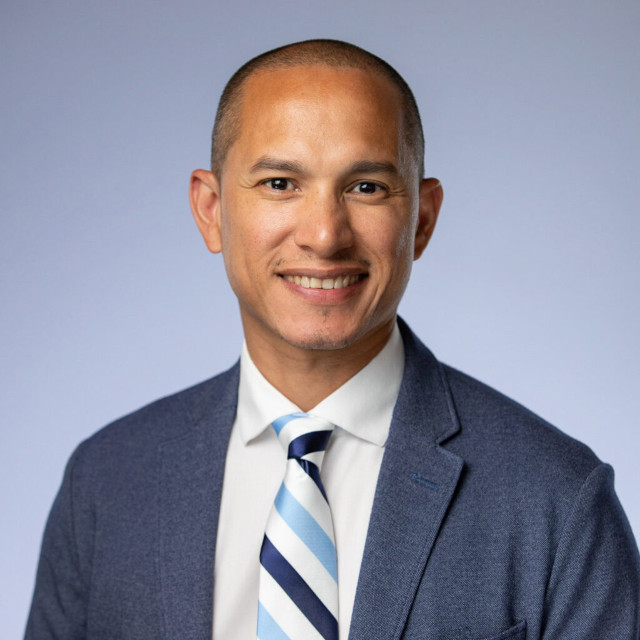On May 20, 2024, the leaders of the Council on Criminal Justice Centering Justice initiative – Khalil Cumberbatch and Marc Levin – led a discussion on the relationship between housing and crime. Panelists included Sarah Gillespie Ellis, Associate Vice President for Metropolitan Housing and Communities Policy at the Urban Institute; Charles Blain, President of Urban Reform; and Latisha Millard, Vice President of Housing at The Fortune Society. The panelists discussed the relationship between homelessness and crime, initial barriers to housing access, the housing-first approach to crime/homelessness, and the challenges people face as they seek access to housing during the transition from prison to society.
Highlights from the Conversation

Sarah Gillespie Ellis
Associate Vice President, Metropolitan Housing and Communities Policy, Urban Institute
“When we look at what factor has the strongest correlation with a city’s homelessness rate, it’s housing costs. So, it’s not mental or behavioral health, it’s not substance use, it’s not crime – It’s housing costs.”
“Why do we see this link between the experience of homelessness and interactions with the criminal justice system? When we look at what kind of offenses we see in the data, it’s what we call ‘quality-of-life’ offenses, [such as] public trespassing and loitering. We specifically looked at the data in Denver, Colorado and two-thirds of the offenses associated with [people experiencing homelessness] are for quality-of-life offenses, and when you look at the general population, it’s ten percent or so.”
“Oftentimes, quality-of-life offenses are not offenses that one would be arrested for, but instead, they get a ticket and a time to show up in court. For all of the reasons you might imagine, someone experiencing homelessness would struggle to arrive at their court date and then there is a warrant for their arrest for failure to appear. That’s the kind of cycle that we can see.”
“Policing is not going to end homelessness. In fact, with [people experiencing homelessness] who are getting cited for quality-of-life offenses, we see the same types of citations year after year. So, arresting and jail stays are not preventing that person from experiencing the same offenses year after year.”
“Housing First means the stability of the housing – the permanent, safe, affordable housing – comes first. Building on that stability, providers engage people in services and engage them in setting goals for themselves, whether it be treatment or employment, or whatever the case may be. Research has shown that outcomes for that model are much stronger; people do not return to homelessness, they’re able to address substance use and mental health challenges, and stay stable in housing longer.”
“From the data side, we spend a lot of time talking about the cost-benefit … and a lot of it focuses just on the public costs of the status quo of homelessness, the public costs of police contacts, arrests, jail stays, [emergency room] visits, court cases, all of the above. And how does that compare to the cost you avoid when someone spends a year in stable housing? Even though supportive housing is an extensive intervention – the most intensive housing intervention we can give someone – if it’s appropriately targeted to people with the highest needs, you often find the benefits offset a significant amount of the cost of the intervention.”
Charles Blain
President, Urban Reform
“The Texas Comptroller released a report a few years ago that looked at all the regulation and delays that go into … new-build housing and came to the conclusion that about a quarter of the cost of a new home can be directly attributed to those regulations … So the kind of small condominium type-things that you can place in your backyard, a lot of cities make those illegal. Some cities are trying to allow homeowners and property owners to do those on their property without having to ask for permission first. And that’s another way of reducing costs, producing more housing, and also generating a second income for folks who need it.”
In terms of housing access, “a lot of times it’s local regulations and requirements [such as] no drug-related offenses within three years … that prohibit [formerly incarcerated individuals] from being able to take advantage of programs through local housing corporations. And then they are looking for housing that is very low cost and maybe in unincorporated parts of the county … or in a place where the housing may be subpar.”
“Separate from housing, something we deal with a lot is the technology gap. With the guys that we work with – especially those who have never used a modern-day cell phone, have never used computers or computers weren’t as widespread as when they went into prison – we’re trying to bridge the gap for them.”
“What we are seeing because of the housing costs and because of eligibility requirements is [housing] being pushed out into unincorporated areas or places where [individuals] don’t have a reliable bus line to then get to that service or even get to where we have most of our programming for [the Prison Entrepreneurship Program]. So we see them fall out of the program simply because they can’t get there as regularly and reliably as necessary.”
“[Investing in housing programs] is actually a true investment. You’re improving communities as well as potentially growing the tax base … I think [it’s important] for local governments, in particular, to recognize that reinvesting in [housing programs] benefits the entire community and benefits the city. With so many competing interests, it might be hard to do upfront, but if they do that hard task, it pays off on the back end.”


Latisha Millard
Vice President of Housing, The Fortune Society
“Housing first is a great approach in the sense that if a person needs housing and they need that security and stability, make sure that piece happens first. But it can’t work in a vacuum—it’s not a siloed approach. It really is, for people who have mental health and substance abuse issues, making sure that the supports are there, but at least you have a specific place to go to provide help and support to that person.
“That’s been helpful for a number of people as they don’t have to jump through so many hoops to get into housing. [This approach] is putting them in housing and then the onus is on the providers to make sure that the supports are brought to that person. And we’ve seen much better outcomes for people when they’re in a supportive environment, as opposed to being transient. It decreases recidivism and they can reconnect to the support they need in order to become stable.”
“When a person is placed in housing, upon entry, our role … is to make sure that they’re connected to supports. So, if there are mental health issues, making sure that they’re connected to a service provider, making sure that they have the help that they need to advocate and obtain the medication that they may need. If they have a substance use issue, really connecting them to providers to either maintain sobriety or get them help and make sure that they have housing upon release. Because there are a number of people who won’t go into treatment for substance use because of the possibility of losing their housing.”
“In regard to barriers to access to housing [during re-entry], I think the biggest barrier is the information barrier. When people are in the reentry process … they don’t know what’s available and what’s out there.”
“It makes more sense to put tax dollars into housing people up front. It seems like an expensive cost, but the same person who’s unhoused is using multiple services. For example, they’re utilizing ER services, or they’re utilizing the homeless system services. There is that impact of law enforcement contact. There’s that impact of families that are separated … These resources are going to be used one way or another.”
Khalil Cumberbatch
“There is a broad agreement that housing plays a crucial role in crime reduction, and that stable housing can prevent people from severely disrupting or even terrorizing their communities. However, there are disagreements on various fronts – the prioritization of housing for those who have committed serious crimes amidst a national housing shortage, the timing of housing initiatives, eligibility for subsidies, and behavior warranting eviction. These are essential aspects of our conversation.”
“While housing is a significant factor, it is just one piece of the puzzle in understanding criminogenic risk factors. Research indicates that leading risk factors for crime include antisocial values, attitudes, peers, poor impulse control, substance abuse, and family dysfunction. Housing stability can enhance participation in rehabilitation programs, although additional challenges like mental illness and substance abuse disorders may complicate this relationship.”


Marc Levin
“If you can prevent someone from falling into homelessness, I think everyone would agree that’s a great idea from both a public safety and a broader perspective of our social fabric and quality of life.”
“Research shows that people who are unhoused are much more likely to be victims of crime.”
About the Centering Justice Initiative
The Centering Justice initiative is a collaborative project engaging a diverse range of the nation’s top thinkers and doers in an ongoing, ideologically vibrant conversation about criminal justice policy.
Additional Resources
To join the Centering Justice email list, please click here.




